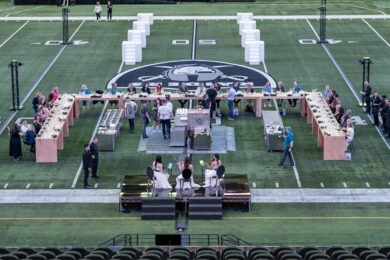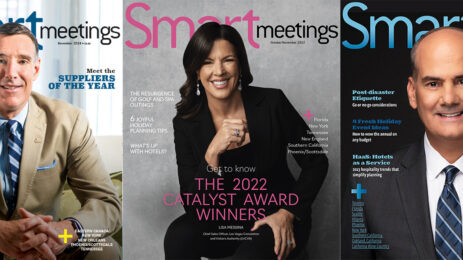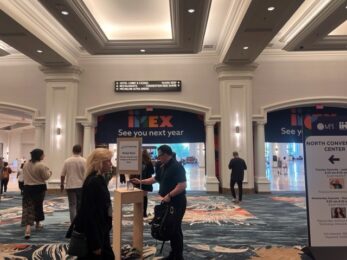Off-site meetings and events offer meeting professionals not only a day out of the office, but also an opportunity to connect with co-workers and people from other companies. Professionals also get a break from their usual routine and look forward to giving tired eyes solace from endless hours staring at computer screens. Once they arrive at the meeting location, however, it is easy for meetings to revert to the usual hum-drum of business conversation.
Whether your role as an event planner is focused on internal meetings or a broader event-marketing strategy, plenty of time, money and organizational skills are invested into their success. To maximize on that investment, you need to keep attendees engaged.
Boredom: It’s Worse Than You Think
The best marketing campaigns are far from boring, and the same is true for events. Boring means you aren’t memorable. All-day meetings in hotel ballrooms often become tedious. For instance, if six of your company’s leaders each deliver a 45-minute PowerPoint presentation, that’s 4 1/2 hours with nothing but slides. It doesn’t take long for the doodling and daydreaming to begin.
And, as it turns out, the feeling of boredom might be even more negative than you think. Peter Toohey, a professor at Calgary State University, shares his view of boredom in the preface of his book, Boredom: A Lively History. He explains that boredom can refer to a variety of terms, including, frustration, surfeit, depression, disgust, indifference or apathy.
Psychologist John Eastwood and his colleagues at York University in Toronto interviewed hundreds of people, asking them to describe what boredom feels like. They concluded that rather than simply having nothing to do, bored people want to be stimulated, but are unable to connect with their environment. When your attendees are bored, they are actively seeking something to grab their attention. They want to be engaged, but your event isn’t doing it.
So, how do you ensure your event isn’t boring? Find ways to incorporate fun and unexpected elements into your event. One way is to offer experiential activities that provide hands-on interaction. According to a study by MPI Outlook for IMEX Group, 69 percent of event planners expect to include experiential elements in their meetings and conventions. Only 9 percent of meeting professionals reported they do not plan to implement these elements.
Exciting Experiential Elements
Overcoming boredom comes down to breaking convention. What can you do to make your meeting or conference different? How can you create an experience that involves more than sitting in a standard conference room and listening to a speaker? Create a fun experience!
Having fun isn’t just for kids. Adults also crave it, but find fun much more difficult to attain. When you include surprising and enjoyable elements in your events, you ensure the results will be memorable. This provides an excellent way to build a positive, ongoing relationship between you and your audience.
Look for hands-on activities; they don’t have to be expensive, and can include collaboration or team building. For example, help co-workers build internal relationships by creating a memory wall. Provide papers, markers and tape, and ask them to write down some positive memories they have shared together.
Then, ask them to draw a few of those memories. (Be sure to stress that artistic skills will not be judged!) Put the pictures up on the wall, and you’ll find yourself with a one-of-a-kind mural for your website and social media—maybe a snazzy Facebook, Twitter or YouTube banner—in addition to happy, engaged attendees.
Start a full-day event with something other than a keynote address. Some conferences begin with attendees doing the wave, a performance by a live band or even tap dancing.
You can also include activities before the official sessions start. Consider yoga or a walking tour—activities that don’t involve a high degree of fitness, but get people moving.
Also, find ways to incorporate a business event theme. It can be as simple as a color that ties into your brand or a theme that focuses on the event’s goal, such as “building for the future.”
Look for ways to be innovative with your team. Set aside time to brainstorm or research activities and themes other companies have successfully used. Collaborate and see how you can build on each other’s ideas.
A little time dedicated to creativity will go a long way toward your event’s success.
Kristen McCabe is a senior marketer at G2 Crowd, who calls both Chicago and Sydney home. Her background includes marketing, events and public relations across a range of industries, including film, publishing, professional associations, and tech.




